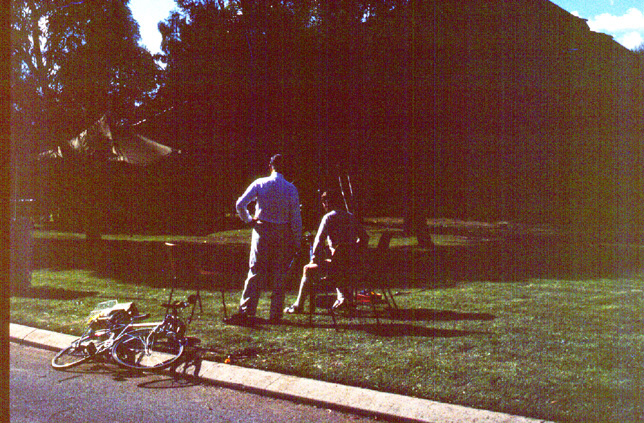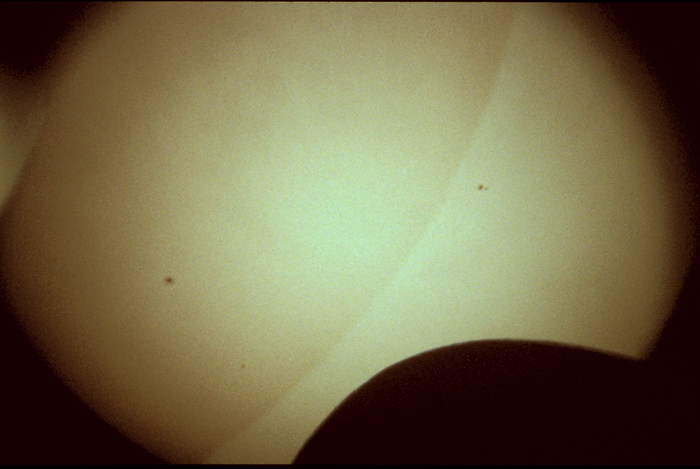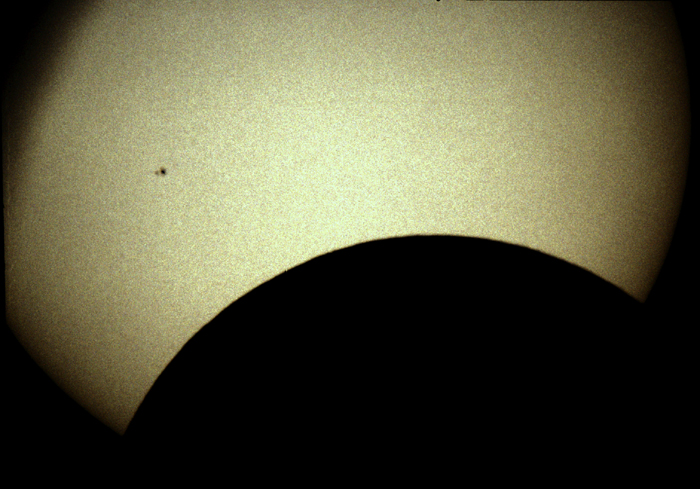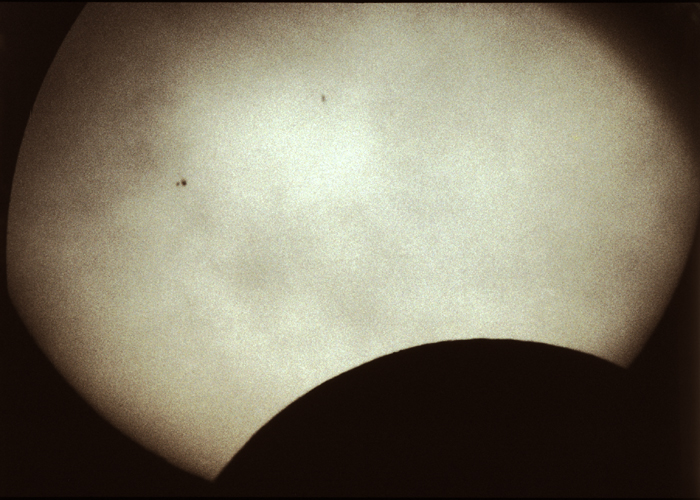
The eclipse of September 11, 1988, was an annular eclipse, with a maximum duration of just under 7 minutes for the annular phase. However the only place where annularity could be viewed from was the extreme east of Africa, and then only just at dawn! The rest of the annular track was entirely over water. The trach passed about 350km south-west of Western Australia, so from Perth, a very deep partial eclipse was visible, with about 75% of the Sun being covered at maximum. Although not as interesting as a total eclipse or even an annular, I still made plans to observe and photograph the eclipse.
At the university I was attending, there was an 8" Celestron telescope with a full aperture solar filter available for student use, so I made arrangments to borrow it for the eclipse. I had also been requested to set up a telescope for public viewing of the eclipse at a nearby community area, so this was the perfect excuse for having claim to the telescope! :-}
Eclipse day was a perfect Sunday afternoon. It was pleasently warm and not a cloud in the sky until near the end of the eclipse. As a result, many people were outside, and the time the eclipse ended, over 100 passed by to have a look through the telescope.

With around 75% of the Sun covered at maximum, there was a noticeable drop in daylight, and it was this that brought most people over to have a look at what was going on. What I found most interesting was the memories of previous total solar eclipses in 1974 and 1976 were vividly brought back as the light dimmed. In fact, I felt cheated as maximum passed and the light began to brighten! It was as though things ended just as it was getting interesting!!
Between the visitors, I managed to obtain several photographs of the eclipse. I had hoped to obtain more, however the time required to swap between eyepiece and camera, including refocusing, meant that there was very little time to take pictures. Below are a few of those I did obtain.


